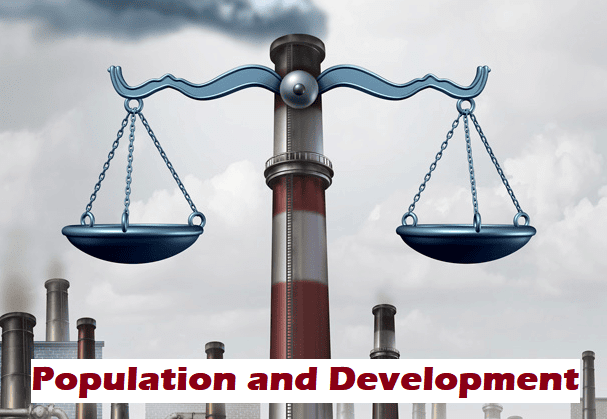Enviornmental Pollution | Environmental Law - CLAT PG PDF Download
| Table of contents |

|
| Air Pollution |

|
| Water Pollution |

|
| Land Pollution |

|
| Food Pollution |

|
| Radioactive Pollution |

|
| Noise Pollution |

|
| Population and Environment |

|
| Deforestation |

|
| Depletion of Ozone Layer |

|
Air Pollution
Air pollution is primarily caused by air pollutants, which are defined in section 2(9) of the Air Pollution Act, 1981.
Definition of Air Pollutants
- Section 2(a): Air pollutant refers to any solid, liquid, or gaseous substance, including noise, present in the atmosphere at concentrations that may be harmful to humans, living creatures, plants, property, or the environment.
- Section 2(b): Air pollution is the presence of any air pollutant in the atmosphere.
Air pollutants can be either gaseous or particulate. With societal progress, there has been a significant increase in the emission of gaseous waste and fine particles into the atmosphere.
The natural air has its own purification process, which helps in removing various types of pollutants continuously introduced into the atmosphere. However, when the rate of pollution is high or the self-purifying capacity of the air diminishes, the accumulation of pollutants occurs, posing a serious threat to human health.
Water Pollution
Definition of Water Pollution- According to Section 2(6) of the Water (Prevention and Control of Pollution) Act, 1974, water pollution refers to the contamination of water or alteration of its physical, chemical, or biological properties due to the discharge of sewage, trade effluent, or other substances into water.
- Such actions may create a nuisance or be detrimental to domestic, commercial, industrial, agricultural, or other legitimate uses of water, as well as to the life and health of animals, plants, or aquatic organisms.
Land Pollution
Overview of Land Pollution- Land is a crucial component of the biosphere, providing the layer where plant nutrients are produced, held, maintained, and made available to plants.
- It serves as the basic medium for food and various needs of humans and other living creatures.
Causes of Land and Soil Pollution
- Solid and semi-solid waste disposal from agricultural practices and poor sanitation.
- Soil erosion due to land use changes.
- Deforestation and excessive use of chemical fertilizers, pesticides, insecticides, and herbicides.
- Polluted wastewater from industrial and urban areas.
Impact of Urbanization
- Urbanization and the desire for comfortable living have exacerbated land pollution.
Food Pollution
Overview of Food Pollution- Food is a fundamental resource for human survival.
- Food pollution begins with the protection of seeds from chemical use.
- Chemicals are also used to protect the growth of plants, flowers, fruits, and vegetables.
Radioactive Pollution
Overview of Radioactive Pollution- The proliferation of nuclear weapons and tests has increased exposure to radiation.
- Radioactive pollution poses immediate threats to human health.
- Water sources, especially rivers and sewers, are at risk of contamination.
Methods of Exposure
- Direct exposure through radioactive particles in the air, radioactive gases, and absorption through the respiratory tract.
- Indirect exposure through the consumption of contaminated food.
Noise Pollution
Definition and Sources- Noise refers to unwanted or unpleasant sound that exerts pressure on the mind.
- Sources of noise pollution can be broadly categorized into industrial and non-industrial sources.
Effects of Noise Pollution
- Noise pollution has severe impacts on physiological and psychological health.
- It can lead to loss of hearing, speech interference, decreased efficiency, various diseases, and sleep disturbances.
Population and Environment
Impact of Population Growth on Physical Resources- Population growth leads to increased demand for food, resulting in expanded agricultural production.
- More cultivable land is created by clearing forests and reclaiming wetlands, ponds, and green belts.
- Advanced agriculture requires more water, fertilizers, and pesticides.
Consequences of Resource Utilization
- Excessive use of fertilizers and pesticides depletes soil fertility.
- Deforestation has significant environmental impacts, leading to imbalances.
- Increased population necessitates more housing, consumer goods, transportation, and fossil fuel consumption.
Pollution from Resource Utilization
- Population growth contributes to pollution of air, land, and water.
- Different types of pollution create various problems in the physical environment, adversely affecting the biological environment.
Deforestation
- Forests play a crucial role in protecting soil and enhancing environmental quality.
- They help in soil conservation, maintaining soil fertility, regulating water cycles, and balancing carbon dioxide and oxygen levels in the atmosphere.
- India has a forest cover of 76.52 million square kilometers, with only 63.34 million square kilometers classified as actual forest cover.
Depletion of Ozone Layer
- The ozone layer protects the Earth from ultraviolet rays from the sun.
- It has been damaged by CFCs used in solvents, refrigerants, aerosol propellants, and foam plastics.
- CFCs, bromine halocarbons, and nitrous oxides contribute to ozone depletion.
Impact of Ozone Layer Depletion
- The depletion of the ozone layer has led to a hole above Antarctica, threatening not only the continent but also other regions affected by melting ice caps.
- Human activities have significantly contributed to ozone layer depletion.
Extinction of Species
- Human activities are causing a massive extinction of species, with implications that are not yet fully understood.
- Areas rich in non-human species and threatened by human activities are home to over 1.1 billion people.
- Modern agriculture practices lead to soil erosion
Value of Biodiversity
- Diverse species are crucial for sources of food, medicines, fuel, and building materials.
- Between 10,000 and 20,000 plant species are used in medicines worldwide.
- Biodiversity meets recreational, emotional, cultural, spiritual, and aesthetic needs of people.
Conclusion
Environmental protection has been a concern since ancient times, as evidenced by historical scriptures. Sustainable development is essential to maintain environmental balance without hindering progress. Any environmental action should undergo proper analysis to minimize problems and achieve a balanced environment.|
39 docs|15 tests
|















